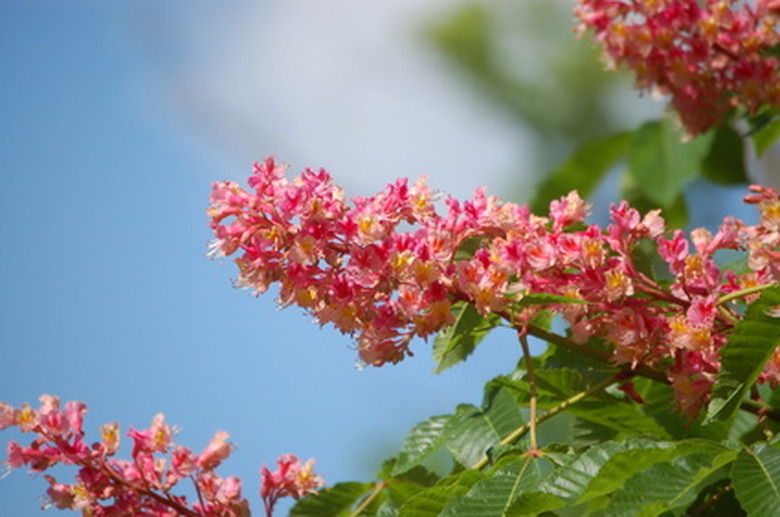Native Ohio Flowering Trees
Ohio glories in its flowering trees: Springtime finds the state glowing with the golden yellow blooms of Cornelian cherry dogwood and fragrant with the scent of Sargent crabapples. While their blooming season may end too quickly, many of Ohio's flowering trees produce colorful and/or edible fruit and brilliant fall color. Some even add interest to winter gardens.
Ohio Buckeye
Best known outside Ohio for the Ohio State University Buckeye teams that bear its name, the Ohio buckeye tree (Aesculus glabra) belongs to the horse chestnut family. In the autumn, Ohio's college campuses and forests blaze orange with the 60- to 80-foot trees' brilliant foliage.
Buckeye trees produce upright clusters of showy yellow and green blooms at the ends of their curving branches. The buckeyes themselves are nuts encased in spiny, dark brown husks. Trees tolerate sun, partial shade, or full shade and prefer rich, moist, acidic soil. Their dense canopies provide excellent shade, but discourage grass from growing under Ohio buckeyes.
- Ohio glories in its flowering trees: Springtime finds the state glowing with the golden yellow blooms of Cornelian cherry dogwood and fragrant with the scent of Sargent crabapples.
- While their blooming season may end too quickly, many of Ohio's flowering trees produce colorful and/or edible fruit and brilliant fall color.
Sow the fresh seeds in fall, or buy young trees at nurseries. Trees work best away from driveways and streets so their fallen flowers, nuts and twigs aren't a problem. While squirrels love the buckeye nuts, every part of this tree, if ingested, is toxic to humans and livestock.
Cigar Tree
Ohio's cigar tree (Catalpa bignonioides) has short, crooked branches with a spread equal to, or exceeding, its usual 25 to 40 foot height. Its pale green, heart-shaped leaves are between 6 and 12 inches long.
The cigar tree, says the Lady Bird Johnson Wildflower Center, puts on a spectacular floral display during May and June. The white flowers appear in clusters of between ten and 20 blossoms. Each 2-inch-wide flower has five ruffled petals. Two large and several smaller yellow spots as well as several small purple spots and stripes mark the blossom's throats. Its cigar-shaped seedpods are the tree's namesake.
- Sow the fresh seeds in fall, or buy young trees at nurseries.
- Its cigar-shaped seedpods are the tree's namesake.
Trees like shady locations with moist or wet soil. Buy young trees at nurseries, scatter seed where it is to grow in late winter or early spring, or propagate trees from stem cuttings. Remove root suckers to prevent unwanted spread.
White Fringetree
Named for its unusual clusters of elongated creamy white blossoms, white fringetree (chionanthus virginicus) belongs to the olive tree family. Growing between 15 and 30 feet, white fringe tree also produces attractive deep blue grape-like fruit. Four to 6-inch long flowers long appear in April and May, just prior to or concurrent with the trees' dark green spear-shaped leaves.
Fruit ripens in late summer, providing a food source for birds and small mammals. Leaves turn yellow in the fall and the tree's white-striped gray bark provides garden interest during winter. These trees are effective as single specimens or planted in groups. They require partial shade and moist sandy soil, and do well along ponds and streambeds. Young trees are available at nurseries.
- Trees like shady locations with moist or wet soil.
- Leaves turn yellow in the fall and the tree's white-striped gray bark provides garden interest during winter.
